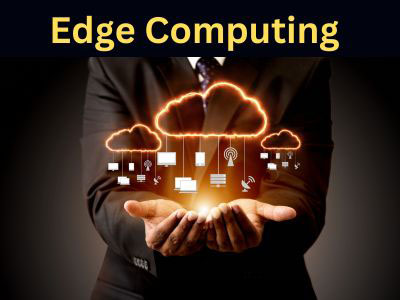What Is The CAGR Of Edge Computing?
Key Takeaway
The CAGR (Compound Annual Growth Rate) of edge computing is projected to be around 30% over the next several years, showcasing its rapid adoption and increasing significance. This growth is fueled by the rising demand for real-time data processing, IoT integration, and advancements in AI technologies. Businesses are leveraging edge computing to improve operational efficiency and reduce latency.
Key industries like manufacturing, healthcare, and smart cities are driving this market expansion. Regional trends highlight North America and Asia-Pacific as leaders in adoption. With IoT devices multiplying and data needs growing, the CAGR reflects how critical edge computing will be in the digital future.
Understanding the Growth Metrics of Edge Computing
The Compound Annual Growth Rate (CAGR) of edge computing reflects its dynamic expansion across industries. As of recent analyses, the global edge computing market is expected to grow at a CAGR of over 35% between 2023 and 2030, making it one of the fastest-growing technology markets. This metric highlights how quickly businesses are adopting edge solutions to meet the demands of real-time processing and localized data handling.
CAGR provides a snapshot of consistent growth over time, offering insights into the market’s performance. Edge computing’s impressive CAGR is driven by its ability to address challenges in latency, bandwidth, and data security. For instance, industries like manufacturing leverage edge computing to enhance automation and operational efficiency, while healthcare uses it for real-time diagnostics.
Such growth metrics indicate not just widespread adoption but also the potential for edge computing to redefine traditional IT and operational infrastructures. As more industries recognize its value, the CAGR is a testament to its transformative impact.

Market Trends Driving CAGR in Edge Computing
Several key trends are propelling the growth of edge computing and contributing to its high CAGR. First, the expansion of IoT devices is a major driver. With billions of devices generating massive amounts of data, edge computing offers a solution to process this information locally, reducing latency and network congestion.
Another trend is the adoption of 5G technology, which complements edge computing by providing high-speed, low-latency connectivity. This combination is particularly beneficial for applications like autonomous vehicles, smart cities, and industrial automation. For example, edge computing ensures immediate decision-making for autonomous vehicles, enhancing safety and performance.
Additionally, the shift toward decentralized data processing is reshaping IT strategies. Companies are moving away from relying solely on centralized cloud systems, opting for edge solutions that offer scalability and localized efficiency. These trends underscore how edge computing is adapting to technological and industrial demands, driving its robust CAGR.
Role of IoT and AI in Edge Market Growth
The synergy between IoT and AI is a significant catalyst for edge computing’s growth. IoT devices generate vast amounts of data, but their true potential is unlocked when paired with AI, which can analyze and act on that data in real-time. Edge computing enables this by processing information close to the data source, reducing the time it takes to derive actionable insights.
For example, in smart factories, IoT sensors monitor equipment performance while AI algorithms at the edge predict maintenance needs. This reduces downtime and improves operational efficiency. Similarly, in agriculture, IoT and AI work together to analyze soil conditions, weather patterns, and crop health, enabling precision farming.
The rise of AI-driven applications, such as facial recognition, natural language processing, and predictive analytics, also benefits from edge computing’s capabilities. By combining IoT and AI at the edge, businesses can achieve faster, more accurate decision-making, contributing significantly to market growth and its impressive CAGR.
Industry Segments Leading Edge Computing Growth
Several industry segments are at the forefront of edge computing adoption, each driving its growth in unique ways. Manufacturing is a clear leader, leveraging edge computing for automation, quality control, and predictive maintenance. Factories equipped with IoT sensors and edge devices can optimize operations in real time, reducing waste and improving efficiency.
The healthcare sector is another significant contributor, using edge computing to power applications like remote patient monitoring and telemedicine. For instance, wearable devices can collect patient data and process it locally, enabling timely interventions without relying on centralized cloud systems.
Other key segments include retail, where edge computing supports personalized customer experiences and inventory management, and energy, where it enhances grid reliability and integrates renewable energy sources. The transportation industry also benefits, particularly in autonomous vehicles and logistics optimization.
These industries showcase how edge computing is tailored to meet specific needs, driving adoption and contributing to its remarkable CAGR.
Forecasted CAGR Across Global Markets
The CAGR of edge computing varies across regions, reflecting different adoption rates and technological advancements. North America currently leads the market, with a strong emphasis on IoT, AI, and advanced connectivity like 5G. The region’s CAGR is bolstered by industries such as healthcare, manufacturing, and retail adopting edge solutions.
Asia-Pacific is the fastest-growing market, with a projected CAGR surpassing global averages. Countries like China, Japan, and South Korea are investing heavily in smart cities, industrial automation, and advanced telecommunications infrastructure. For example, China’s push for IoT in manufacturing and logistics is accelerating edge adoption.
Europe follows closely, driven by sustainability initiatives and smart energy projects. Governments and businesses are using edge computing to optimize energy grids and reduce emissions. Meanwhile, Latin America and Africa are emerging markets where investments in infrastructure are starting to show results.
These regional variations highlight how global markets are embracing edge computing at different paces, collectively contributing to its robust growth trajectory.
Conclusion
The impressive CAGR of edge computing underscores its transformative potential across industries and regions. Driven by trends like IoT expansion, AI integration, and 5G adoption, edge computing is reshaping how businesses process and act on data. With industries such as manufacturing, healthcare, and energy leading the way, and regions like Asia-Pacific experiencing rapid growth, the future of edge computing is bright. The CAGR reflects not just market growth but a shift toward smarter, faster, and more localized data solutions that will continue to revolutionize industries worldwide.

